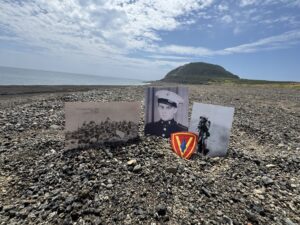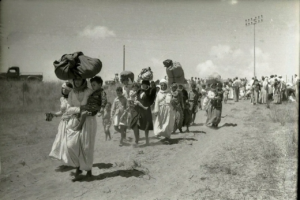Native Women Lead in partnership with New Mexico Community Capital recently won a $10 million award with the goal of advancing gender equality in a new project called “The Future is Indigenous Womxn.”
So, KSFR sat down with Jaime Gloshay and Liz Gamboa to talk about their plans to expand indigenous women’s power by 2030.
KSFR: To start off, can you explain what the Equality Can’t Wait Challenge is?
Liz Gamboa: It was an opportunity by the funders or the funder coalition, Melinda French Gates, Charles and Lynn Schusterman, family philanthropies and McKenzie Scott and Dan Jewett, to come together and try and bridge the gap with women’s equality. So, they wanted bold ideas, they wanted new ideas, and really wanted to target it toward women who have maybe been overlooked communities that have been overlooked.
Jaime Gloshay: Yeah, it was essentially was a challenge, a $10 million challenge to look at how do you increase women’s power and influence in the United States. And it was neat, because we get to bring our vision, our ideas to see about what it means to invest in and empower women leaders, from a wide range of lived experiences. We did this, really, from the indigenous woman’s perspective, one because we’re highly invisible, as well as oftentimes overlooked in this country.
KSFR: And I want to go back to this point of you said that Indigenous women are invisible and a lot of sectors and that can also be present in feminism and women empowerment. So, I want to ask you both. Why does inclusivity matter? And why does representation matter?
Liz Gamboa: I came from the financial services industry. And I saw very few people that look like I did, like I do. And I think it would really just welcome and support so many others that want to get into the industry and maybe are intimidated or don’t have mentors or don’t have people to look up to, to see an extended hand. So, kind of built into this whole process, we’ve really tried to think about that, like how do we bring people in? And how do we keep the doors open and guide them to this kind of work that they want to do, but maybe they’re shut out.
Jaime Gloshay: And I’ll just add to that Indigenous women, well indigenous people across this country represent less than 2% of the population. So, if you cut that in half Indigenous women are less than 1% of the population. And we’re often, unfortunately, our narrative is misguided by stereotypes. And we have a lot of historical trauma in this country. I know when my colleagues and I will go to national spaces we’re often the only ones that are representative of indigenous community. And therefore, that voice that perspective is often overlooked and missed. And this is really our opportunity to represent as the matriarchs that we are. And thinking about Deb Haaland’s rise to being one of the first Congresswoman to being the first Secretary of Interior, that was really telling to see why representation matters. It was the first time in my children in my life where I could see an indigenous woman at that level, that political power level to really influence and affect change in this country. It’s huge. But we also know that more women need to come into the space and there needs to be more representation, especially as the First Peoples of North America.
KSFR: And you know, we have this goal of 2030. But I was reading that it is estimated now it would take 208 years to reach gender equality in the U.S., which is a staggering number to consider. But how will The Future Is Indigenous Womxn project start to close that gender based gap when it comes to social and economic disparities?
Jaime Gloshay: So, we have this big vision and audacious goal to really show what an inclusive ecosystem looks like. We feel like this proposal can really demonstrate pretty regionally, how to support those most invisible and that could actually really be like I don’t want to say a test case, but a great example of how local ecosystems and economies can support those most invisible in their communities. We do a lot of policy and advocacy around pay equity around Missing and Murdered Indigenous Women and Relatives, and also around the care economy and infrastructure that’s happening right now. And as indigenous people, we have a really unique relationship with The United States in which we have a Nation to Nation relationship. I think that a lot of people don’t really understand that actually gives us a unique opportunity to leverage and protect our nations but also to influence true change at that national international level.
Liz Gamboa: What we do is we provide culturally relevant programming and really just trying to bridge between maybe Western methodologies and indigenous worldviews. So, you know, combining it, really just not being forced to set aside who we are as Indigenous people, this method of capitalism, and this extraction and this profit, profit, profit, it’s about community. It’s about the people like are the people healthy? Is the water healthy, you know?
KSFR: Liz you just brought up capitalism and how it’s not really working for a lot of people, especially women. And Jamie, you have said that Native American women are paid 60 cents for every dollar a white man earns. So, how will this project address economic stability for women? And why is it so important to have that stability for Native women?
Jaime Gloshay: We see entrepreneurship as one pathway to support Indigenous women reclaiming their power as well as asserting their worth to be able to make a living wage to be able to care for our community. A lot of the women that we support wear multiple hats wear multiple roles as caregivers as carriers of language, culture, community and their nations. And we feel it’s absolutely critical that they make a living wage so that they can continue to do the work that is needed in our communities, and to support their families and their selves. We see economic agency and empowerment as one way to really think about how women have not only the ability to make decisions about their own lives, but decisions and influence over to the lives of their communities, and their nations. We see that economic stability could actually create safety nets for Indigenous women.
KSFR: And one thing that comes up often when it comes to women empowerment is that there’s this preconceived notion that there’s already equality. But we know that’s not true. We’ve seen the #MeToo movement take off the TIME’S UP movement. But we also seen like you’ve said, Jaime, the Missing and Murdered Indigenous Women and the pay gap that not only triggers the gender equality aspect, but also triggers the racial aspect as well. So, for both of you, how do you find the motivation to keep fighting for equality? And why is it so important to you?
Liz Gamboa: Well, I think that we come from these communities, so it’s very personal, right? So, for me, it is really just turning around the narratives, turning around the understanding. And just having yet another opportunity to support just this, greater understanding of what we’re doing. And no we’re not equal, you know, we still have a long ways to go in, I think that we see that the investment is going to support and model how to care for all women.
Jaime Gloshay: So, for me, it’s really about if we can see ourselves as the experts to the solutions and also like advocate to other folks around, even outside of our community that we actually do have the solutions within us. And demonstrate how our solutions can actually support solutions of other communities. I always say that Indigenous people are actually one of the oldest entrepreneurs, we’ve had trade and barter systems that existed 1000s of years prior to colonization, that expanded over 1000s of communities, cultures, miles, and we have a unique understanding of the natural world and relationships with I guess, natural systems, and we can definitely be responsive to those quick changes. And that’s how our ways of life are actually modeled so that are inclusive of people and planet, not just profit.
KSFR: And if you could tell our listeners one thing, what would that be?
Liz Gamboa: Yes, I think you know, especially for people who are non-native or non-indigenous, they’re wondering how do we get involved? How do we help? How do we support these communities, I would say amplify the story, amplify the story in your circle of influence, invest in us.
Jaime Gloshay: I’d also add that this $10 million investment will serve 3,000 Indigenous women over the next five years. We’re going to create a fund as Liz had mentioned, in addition to this, to actually fund Indigenous women entrepreneurs, we want to reclaim and reframe what it means to be successful through a culturally relevant lens. And really, the long-term ripple effects is we’re going to see the pathway towards healing, safety, economic agency, sovereignty. And this really is part of the larger movement Rematriation that is happening all over the globe. And we’re proof, Deb Haaland’s proof, that you can increase women’s power influence in this country.




